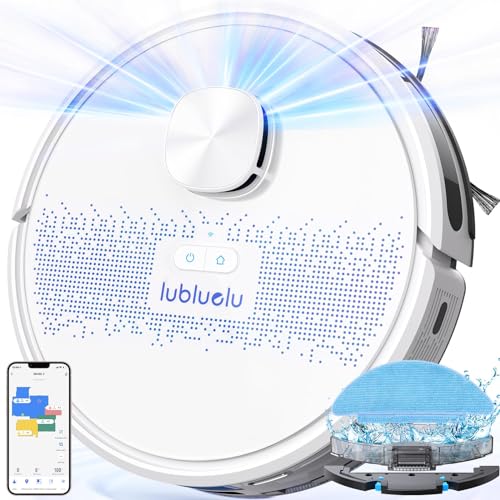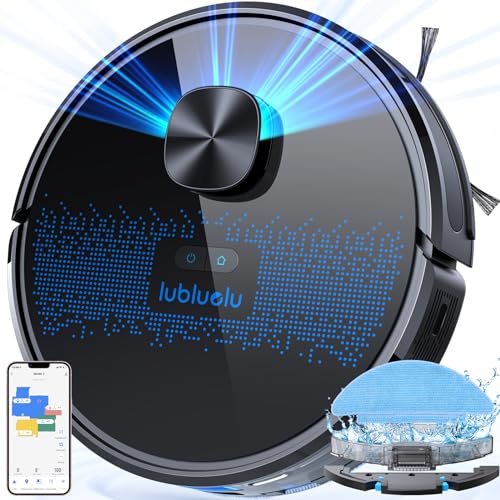You'll Never Guess This Robot Vacuum Lidar's Tricks
페이지 정보
작성자 : Nestor
조회수 : 42회
작성일 : 24-09-04 05:55
본문
 Lidar Technology Elevates Robot Vacuum Cleaners
Lidar Technology Elevates Robot Vacuum CleanersThe introduction of lidar technology into robot vacuum cleaners has brought into a new era of intelligent and adaptable cleaning. Lidar allows navigation, obstacle avoidance, and optimized cleaning routes.
It works by emitting laser beams and determining the time it takes for them to reflect off objects and return to the sensor. This information is used to build an accurate map of the surroundings.
Accuracy and precision
Lidar technology is a game changer in the world of robot vacuum cleaners. It has elevated them to intelligent and adaptive household companions. They can map space with precision and precision, allowing them to navigate and avoid obstacles without difficulty. When compared to other navigation technologies like cameras and gyroscopes lidar provides superior performance and reliability.
It works in a very simple way: The robot vacuum cleaner lidar's sensors emit laser beams which reflect off objects in the room. The robot vacuum with lidar and camera can calculate the distance between it and objects in the room based on time that it takes for the laser beams to reflect back to the sensor. The robot then creates a live detailed map of the surrounding. This is why Lidar-equipped robots like the TESLA Smart Robot Vacuum Laser the incredible ability to detect obstacles, effortlessly crossing low thresholds and avoiding steps without skipping a beat.
Once the robot has an outline of the entire area, it can plan its cleaning route. This leads to more efficient, thorough, and systematic cleaning. Robots that do not use Lidar navigation follow a random pattern of cleaning, ping-ponging between different areas.
However, as with all technologies lidar systems, the lidar system is not without its limitations. The ability of the lidar system to detect transparent or reflective surfaces such as glass and mirrors is among its main concerns. These surfaces can be misinterpreted as an obstacle-free zone, which can cause the robot to move over them, which could damage the table.
Another issue that could be a problem is the vulnerability of lidars to side-channel attacks like those that exploit the acoustic signals transmitted by the sensors. These kinds of attacks could be used to eavesdrop on private conversations or to gather sensitive personal information, like passwords and credit card numbers.
Overall, lidar-equipped robots are a smart choice for those who want to increase the cleanliness and convenience of their home. However, it's important to consider the pros and cons of each option before deciding on a model that meets your particular requirements.
Adaptive Cleaning Strategies
A Robot vacuum lidar vacuum cleaner should be able navigate around obstacles while moving around your home. Lidar technology enables this, elevating robot vacuum cleaners to intelligent household companions rather than simple cleaning tools. Consumers are increasingly choosing devices with advanced navigation capabilities, realizing the importance of efficiency, precision and flexibility.
Lidar is a navigation tool that can be used by robot vacuums. Many are equipped with obstacle sensors. By analyzing the amount of time it takes laser pulses to bounce off objects and then return to the sensor, it is able to determine the distance to nearby surfaces. This data allows it to change its course in real-time when it comes across an obstacle or wall.
Combined with vision sensors, which are able to see through reflective or opaque surfaces, Lidar can detect a wider range of surfaces and objects. It can also be used to aid the robot in avoiding areas have already been cleaned. This ensures that every room in your home gets its due portion.
Other kinds of sensors can improve the navigation capabilities of a vacuum. Cameras can provide information that helps the device identify objects and obstacles in its route. This information can be used to help the robot navigate safely and avoid obstacles such as toys or fragile items. Cameras also assist in creating virtual boundaries or no-go zones within a space and ensure that the robot vacuum with obstacle avoidance lidar doesn't accidentally bump into or damage furniture or other objects.
In addition to obstacles, a robot must be able to recognize floor surface patterns and changes in texture. Vision sensors are used to determine the location of features on surfaces using the combination of cameras and algorithms. These sensors are able to determine the floor plan of an area and produce maps that aid the robot in navigating more efficiently.
Other sensors that can enhance a vacuum's navigation include obstacles detection and cliff sensors. Cliff sensors are a necessary safety feature, preventing the robot from falling off of stairs or other potentially hazardous surfaces. They detect infrared light reflective of obstacles and are visible on the vacuum's sensor. In the same way, obstacle detection utilizes infrared signals for detecting obstructions on the ground. These signals are transmitted by the robot's bumpers, and can cause a vacuum to move away from an object.
Mapping and Memory
When it's time to determine the effectiveness of a robot, cleaning performance tests that are performed in a straight line reveal a portion of the story. How well a robot navigates your space and plans its cleaning routes is also important. Many people invest in a robot with mapping capabilities that use Light Detection And Ranging (lidar).
Lidar-enabled robots utilize spinning laser sensors to scan their surroundings and generate digital maps of the space's layout. They can identify furniture, walls, and other objects, in addition to their distance from the robot. Maps can be used to create cleaner cleaning paths.
These robots are able to create detailed maps of a single floor or an entire multi-level house, and they are able to adapt to changing environments, such as moving furniture or temporary obstacles. They also recognize a wide range of different objects and surfaces, such as hardwood floors, carpet and tiles. However, they may be unable to recognize dirt, dust or other particles of fine size.
Lidar navigation can reduce the amount of time required for robots to finish a task. This is because it enables more precise obstacle detection and navigation, which eventually results in shorter runtimes. A more accurate map may also result in less redundant work and redundancy which will further reduce running costs.
Lidar isn't the only mapping technology used in robotic vacuums. However it is the most advanced. Many models incorporate technologies like CVSLAM (ceiling-vision-based simultaneous mapping and location) with an upward-facing camera that can detect their surroundings. These systems can overcome certain limitations of gyroscopeand accelerometer mapping, including the inability to detect the height and presence of small obstacles like bookcases.
Some robotic vacuums also feature an internal memory that can remember the arrangement of your home which makes them easier to operate without relying on a remote control. These systems can sometimes even detect obstacles that are repeated and adjust automatically to eliminate them. This is especially helpful for pet owners, which are difficult to distinguish from normal dirt and other debris using only sensor data.
Integration with Smart Home Ecosystems
Modern smart vacuums equipped with Lidar navigation systems can seamlessly integrate into your home's ecosystems. They can communicate with other devices that are connected, for example, your home alarm system or smart light bulbs. They can also use data analytics to constantly improve their performance by enhancing cleaning paths and adapting to changes in environments. They can also use voice commands to allow you to use them hands-free, without needing your attention.
It allows them to follow cleaning paths that are specifically designed for space and cover all areas of a room efficiently, with minimal unnecessary movement. This reduces battery energy and time, and also ensures that your living space is thoroughly cleaned.
Lidar-based robots are more efficient than models that are budget-friendly that rely on the traditional bump-and-move navigation technique. That's because they do not waste energy moving ever so slightly to the left or right to navigate around obstacles as they typically do with their standard bump sensors. Instead, they stay clear of obstacles thanks to their precise mapping capabilities, making them much more efficient than traditional robotic vacuums.
Lidar-based sensors are better than other sensor technologies, including infrared and ultrasonic sensors. Robots are able to avoid going over furniture and objects many times, resulting in less suction. They're also more efficient than the mapping that is based on cameras that may have difficulty finding a way through a cluttered environment and may require a lot of setup up and calibration.
Finally, Lidar-based systems can connect with your home's smart devices and platforms which makes them simple to control with AI assistants such as Alexa or Google Assistant. This lets you designate specific rooms for cleaning or create virtual boundaries that restrict your robot from entering certain areas, which ensures the complete and seamless cleaning process.
A vacuum cleaner with Lidar navigation is the best budget lidar robot vacuum choice to help you clean your home in a safe and efficient way. This feature may cost you an extra amount, but it will let you get the most from your robot vacuum.
